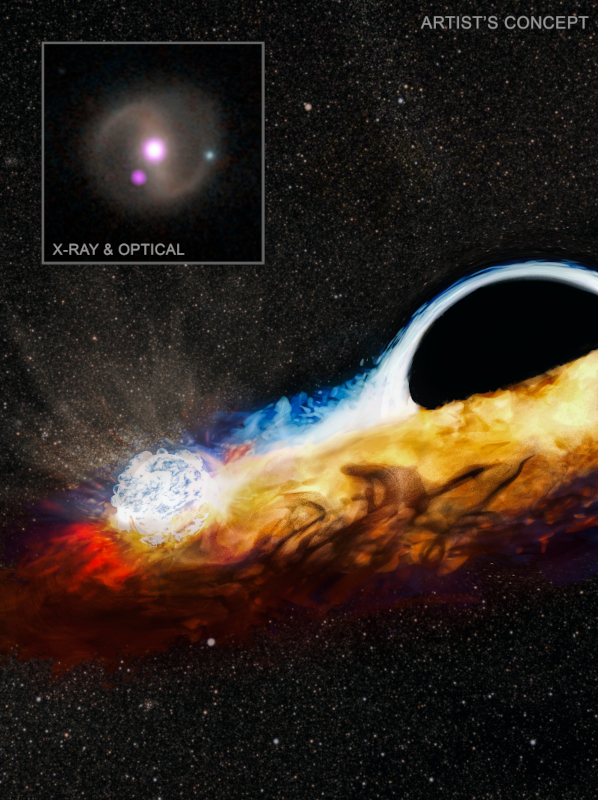
 Credit: Nicholl, M, et al., 2024, Nature
Credit: Nicholl, M, et al., 2024, Nature
Gradually Falling Into Darkness
In 2019, astronomers on earth witnessed an astonishing thing: a tidal disruption event (TDE), a supermassive black hole at the center of a distant galaxy gradually munching on a star that wandered too close and fell through its semi-permeable, voracious maw. Subsequent high-resolution observations of this galaxy with the Chandra X-ray Observatory showed that the X-ray emission from the central black hole increased in brightness, then faded away, over the course of a few hours. This peculiar situation prompted detailed X-ray monitoring by the NICER X-ray facility on the International Space Station,
along with Swift and the India Space Research Organization's AstroSAT multi-wavelength space telescope.
Over the course of about 9 days of observation, these telescopes saw that, about every 2 days, the X-ray emission from the central black hole rose and fell in a nearly regular pattern, a mysterious phenomenon known as a "quasi-periodic eruption" (QPE for short).
For the first time astronomers had evidence suggesting that a TDE could produce a QPE.
Researchers believe that the X-ray observations, along with ultraviolet observations from the Hubble Space Telescope and optical observations suggest that the observed QPE is produced when some orbiting body (normal star, or maybe a small black hole) crashes into the disk of debris around the central black hole left behind by the star ripped apart in 2019. The image above shows an artist's interpretation of this unusual scenario. The central supermassive black hole (on the right), is surrounded by a disk, the remnants of the disrupted star and, on the left, another careless object in orbit around the black hole crashes into this disk every two days, producing a burst of X-rays. The inset shows an optical image of the galaxy, with X-ray data from Chandra shown in purple. The supermassive black hole is the bright source at the center of the galaxy.
Published: November 25, 2024
<
HEA Dictionary ● Archive
● Search HEAPOW
● Other Languages
● HEAPOW on Facebook
● Download all Images
● Education ● HEAD
>
Each week the HEASARC
brings you new, exciting and beautiful images from X-ray and Gamma ray
astronomy. Check back each week and be sure to check out the HEAPOW archive!
Page Author: Dr. Michael F. Corcoran
Last modified Monday, 02-Dec-2024 10:54:38 EST


